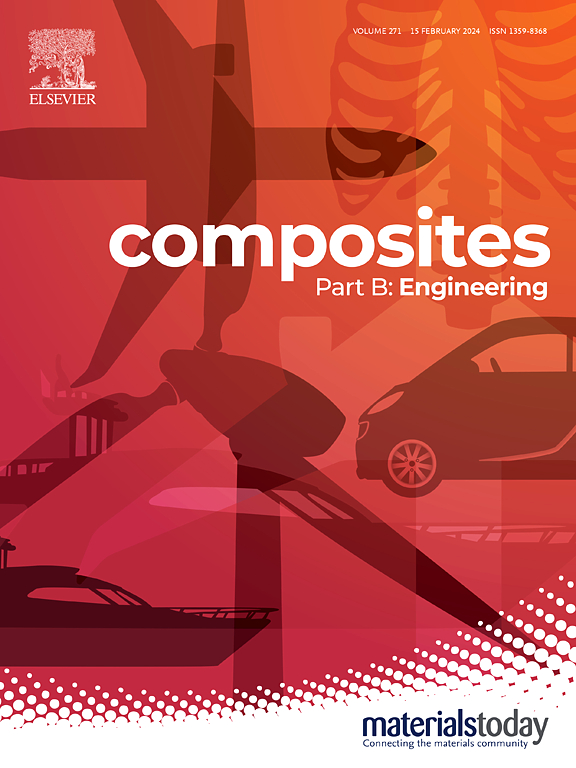Synergistic effects of Zn/Fe dual-additives on Ca5(PO4)2SiO4 bioceramics: Induced biomineralization of scaffolds with enhanced osteogenesis for bone tissue engineering
IF 12.7
1区 材料科学
Q1 ENGINEERING, MULTIDISCIPLINARY
引用次数: 0
Abstract
The imperative need for bone defect repair has driven the pursuit of advanced bone tissue engineering scaffolds, which are perceived to have a transformative impact on clinical applications. However, the enhancement of biological performance, bioactivity of these materials, and efficiency of their synthesis remain enigmatic challenges. The integration of ZnO and Fe2O3 into the composition of calcium phosphate silicate (CPS) bioceramics has been previously established to substantially fortify their mechanical properties. Yet, the academic discourse on the amalgamation of Zn and Fe within bioceramic matrices is strikingly sparse, and the synergistic interplay between these elements on the sintering process and the ensuing biological attributes has scarcely been probed. In a pioneering effort to address this lacuna, a novel Zn/Fe-CPS bioceramic has been meticulously crafted with a dual additive approach, wherein the judicious balancing of Zn and Fe ratios has culminated in a material that boasts exceptional mechanical resilience, the propensity to induce apatite formation, and exhibits commendable degradation rates and biocompatibility both in vitro and in vivo. Most notably, this material is expected to be an excellent bone repair scaffolds with comprehensive performance attributed to it enhanced biomineralization and osteogenic capabilities, as well as its promotion of angiogenesis.
Zn/Fe双添加剂对Ca5(PO4)2SiO4生物陶瓷的协同作用:诱导生物矿化促进骨组织工程支架的成骨
骨缺损修复的迫切需要推动了对先进骨组织工程支架的追求,这被认为对临床应用具有变革性影响。然而,提高这些材料的生物性能、生物活性和合成效率仍然是一个谜一样的挑战。将ZnO和Fe2O3整合到磷酸硅酸钙(CPS)生物陶瓷的组成中,可以大大增强其力学性能。然而,关于生物陶瓷基质中锌和铁的合并的学术论述非常稀少,并且这些元素在烧结过程和随之而来的生物属性之间的协同相互作用几乎没有被探讨。在解决这一空白的开创性努力中,一种新型的Zn/Fe- cps生物陶瓷已经通过双添加方法精心制作,其中Zn和Fe比例的明智平衡最终使材料具有卓越的机械弹性,诱导磷灰石形成的倾向,并且在体外和体内都表现出值得称道的降解率和生物相容性。最值得注意的是,该材料具有增强的生物矿化和成骨能力以及促进血管生成的综合性能,有望成为一种优秀的骨修复支架。
本文章由计算机程序翻译,如有差异,请以英文原文为准。
求助全文
约1分钟内获得全文
求助全文
来源期刊

Composites Part B: Engineering
工程技术-材料科学:复合
CiteScore
24.40
自引率
11.50%
发文量
784
审稿时长
21 days
期刊介绍:
Composites Part B: Engineering is a journal that publishes impactful research of high quality on composite materials. This research is supported by fundamental mechanics and materials science and engineering approaches. The targeted research can cover a wide range of length scales, ranging from nano to micro and meso, and even to the full product and structure level. The journal specifically focuses on engineering applications that involve high performance composites. These applications can range from low volume and high cost to high volume and low cost composite development.
The main goal of the journal is to provide a platform for the prompt publication of original and high quality research. The emphasis is on design, development, modeling, validation, and manufacturing of engineering details and concepts. The journal welcomes both basic research papers and proposals for review articles. Authors are encouraged to address challenges across various application areas. These areas include, but are not limited to, aerospace, automotive, and other surface transportation. The journal also covers energy-related applications, with a focus on renewable energy. Other application areas include infrastructure, off-shore and maritime projects, health care technology, and recreational products.
 求助内容:
求助内容: 应助结果提醒方式:
应助结果提醒方式:


